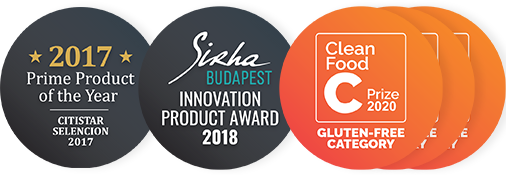Amino acid
They are of outstanding importance in the body’s protein construction. There are 25 types of amino acids in living organisms, 22 of which are protein builders. In the human body, the protein content is 14-16%, and the free amino acid content is only 0.1%.
Autoimmune disease
It arises when the immune system gives an abnormal, aggressive immune response against some structure that is normally found in the body.
B vitamins
These vitamins supply our body cells with energy, starting the metabolism of fat and proteins.
Candida
The Candida fungus is a natural part of the human body, a member of the oral, intestinal and vaginal flora. The presence of this benign fungus is not a problem as long as the body is not weakened by some external or internal influence, or its balance is upset, since in this case the benign fungus can quickly turn into a malignant pathogen. An infection caused by the Candida fungus can affect the skin, mucous membranes, or even the entire body.
In our modern world, our bodies are undoubtedly exposed to many negative effects every day: stress, rush, uncertainty, inadequate nutrition (excessive consumption of sweets and animal protein, additives and preservatives, consumption of few vegetables, fruits and cereals, questionable food quality, food allergies and intolerances). , which can all contribute to the breakdown of our natural internal balance; not to mention other factors, such as a pre-existing disease (e.g. diabetes) or a course of antibiotics that weakens the immune system.
Such imbalances in the body can lead to the growth of Candida fungi, a process that can cause unpleasant symptoms to appear in different parts of the body (skin fungus, vaginal yeast infection, oral thrush, esophagitis, etc.). Fortunately, there are many modern products to eliminate and cure these symptoms, but in order to avoid discomfort, it is better to focus on prevention.
Fortunately, with a little care and awareness, the factors we cause that lead to the growth of the Candida fungus (e.g. inadequate nutrition) can be easily eradicated. If there is a risk of Candida infection, it is worth starting a Candida diet, since the aforementioned fungi feed mainly on carbohydrates, and if they do not receive the necessary nutrients, their number will decrease. Experts usually recommend a 3-6 month Candida diet, during the first 2-3 weeks of which it is worth following the strict rules for a quick and effective improvement. In such cases, we have to banish sweets from our diet, including honey and even fruits. (Even sour fruits contain fructose, and sweeteners also contain fructose). It is also not recommended to consume foods and drinks containing yeast (e.g. cheese, beer, wine) and starch (e.g. white bread, white rice, pasta), and you should also be careful with additives, coloring agents, and stock improvers.
| It is not advisable to consume it during the whole diet |
It is forbidden in the first 2-3 weeks, it can be consumed afterwards |
It can be consumed during the entire course |
|
| cereals, pasta, breads | white bread, bun, cresent | buckwheat, barley, bran products, millet, lentils, oats, oat products |
|
| vegetables | mushroom | beans, peas, corn | eggplant, artichoke, beetroot, zucchini, pumpkin, broccoli, cauliflower, asparagus, cucumber, spinach, tomato, pepper, radish, lettuce, onion, garlic, carrot, turnip, parsley, celery, ginger, potato, white and red cabbage , Brussels sprouts, beets, rosemary, saffron, turmeric, tarragon, basil, cumin, curry, coriander |
| fruits | dryed fruit, melon | peaches, grapes (in moderation), apples, pears, avocados, cherries, oranges, lemons, grapefruit, bananas |
ananas |
| meats, egg | any lean meat, fish, shellfish and crustaceans, eggs |
||
| dairy products | kefir, sour cream, most cheeses (especially moldy varieties) |
light, non-mushroom ripened cheeses, goat cheese, goat milk, milk, |
natural yogurt with living flora, natural drinking yogurt with living flora, sheep cottage cheese |
| fats, sweets | sweets | cold pressed oils | |
| others | baking powder, yeast, products and foods made with yeast, ketchup, mayonnaise, mustard, ready-made salad dressings and sauces, soy and barbecue sauces, beer, wine, champagne, fruit juices |
nuts, pumpkin seeds, sesame seeds, coffee, mineral water, teas |
According to the lessons of the table above, fortunately, life does not stop even if you continue the Candida diet, as there are many alternative options for maintaining a varied and healthy diet. You can even try new flavors and dishes, feel free to use herbs, among which rosemary, saffron, turmeric, coriander and Roman cumin have a strong antifungal effect. Among the oils, oregano, garlic and extra virgin olive oil are particularly good.
Candida albicans
It is also found in the human body under normal conditions and regulates its growth through the beneficial bacterial flora of the intestine. There is a problem when, as a result of some damage to the intestinal flora, the fungi multiply and the toxins released from them attack the body.
Enzyme
The vast majority of enzymes are proteins, the role of which is to speed up the speed of chemical reactions taking place in the body.
Phosphorus
It plays an important role in protein, carbohydrate and fat metabolism. 80-85% of phosphorus is responsible for the strength of bones and teeth. Our body also stores part of its reserve energy in the form of phosphorus compounds. Like magnesium, it is necessary for the proper functioning of the nervous system and enzymes.
Gluten
Gluten is a mixture of gliadin and glutenin proteins, which account for approx. They make up 80%. It is found in the seed proteins of wheat, rye and barley along with starch and nourishes the seed germ.
Herb
Those plants, some part of which is used by people for medicinal purposes due to the active substances they contain, and whose use is authorized by an official source.
Cholesterol
A compound found in all animal and human cells. It occurs in large quantities in the adrenal gland and nervous system. The liver produces the largest amount of cholesterol in our body. It plays an important role in the structure of cell membranes. We distinguish between high (LDL) and low (HDL) cholesterol levels.
Silica
Silicic acid is nothing but water-soluble plant silicon that can be easily utilized by the body. Through its building and supporting functions, it plays an active role in our bone, collagen and cartilage formation, bone metabolism, mineralization and calcium absorption
Flour sensitivity
An autoimmune disease that primarily affects the small intestine, which cannot be cured, but can be treated with diet. However, gluten, the substance that causes sensitivity, is not only found in wheat flour. Gliadin in wheat, secalin in rye or hordein as gluten components in barley can all cause celiac disease in genetically predisposed organisms. These proteins are resistant to digestive enzymes and cause an inflammatory reaction when they enter the intestine.
Magnesium
It is an essential mineral for our body, as it implements the energy-generating function of more than 300 enzymes in the cells. In addition to the functioning of the nervous system, magnesium is also involved in the construction of bones and teeth in addition to calcium
Manganese
Like phosphorus, it participates in protein, carbohydrate and fat metabolism. Our body contains 12-20 mg of manganese, and a manganese deficiency cannot occur with a mixed diet.
Fiber
Carbohydrate of vegetable origin, which the body cannot digest, so it goes straight to the large intestine. As a result, it binds water better, fiber-containing foods are more easily absorbed, thus stimulating bowel function and digestion
Routine
A chemical compound found in various citrus fruits, buckwheat, leaves of rhubarb species. It prevents cell damage due to its antioxidant properties.
Serotonin
It is produced by neurons of the central nervous system and cells of the gastrointestinal tract. It plays an important role in regulating body temperature, mood, nausea, sexuality, sleep and appetite. Low serotonin levels can be responsible for depression, migraines, tinnitus, and many neurological disorders.
Silicon dioxide
After oxygen, the second most abundant element on Earth is silicon, a mineral that does not dissolve in water. As a vital trace element of the body, it participates in the formation of the wall of connective and supporting tissues. Bones and cartilage, skin, varicose veins, arteries, trachea, tendons, and the cornea and conjunctiva of the eye contain a lot of silicon.
Iron
A metallic mineral, its biggest role is in oxygenating the blood. Iron binds oxygen molecules in red blood cells.
Blood sugar level
The hormone insulin is responsible for optimal maintenance of blood sugar levels. When the body cannot produce or use insulin in sufficient quantities, diabetes can develop.
Vitamin
It is an organic chemical compound that is essential for the human body. However, our body is not always able to produce it in sufficient quantities, so it comes in the form of nutrients.



